Paradox: the larger the assortment, the more difficult it is to make a choice. Just 20-30 years ago, only paper wallpaper. Now progress has provided a much larger selection of materials from which wallpaper is made.
People often don’t really know how wallpapers differ from each other, except for color and design. Let's figure it out.
Vinyl wallpapers
Vinyl wallpapers two-layer. The first layer is fabric or paper. The second is made of a synthetic material - polyvinyl chloride. In other words, it is called PVC, vinyl, winnol, corvik, lukovil, etc. Simply put, polyvinyl chloride is plastic. Linoleum is made from this material, furniture edge and even clothes. By the way, gramophone records are also made of polyvinyl chloride.
This material is both a plus and a minus of vinyl wallpaper.
Dignity. Polyvinyl chloride “does not burn in fire and does not sink in water.” Therefore, vinyl wallpapers are waterproof and can even be wiped with a brush and cleaning agents. They don't burn. They are not afraid of exposure to light and direct sunlight, water and scratches (other mechanical damage).
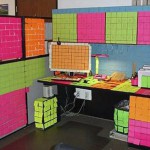
Vinyl wallpaper is impregnated with a special compound that prevents the formation of fungi and mold. This wallpaper is good for bathrooms and kitchens where there is high humidity.
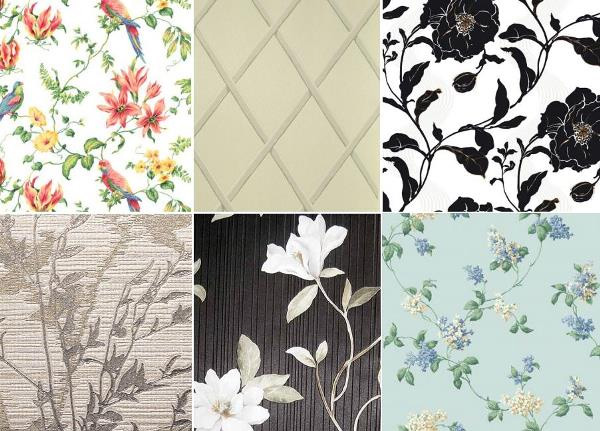
Flaw. It's synthetic artificial material, so it does not allow air to pass through. Polyvinyl chloride releases harmful substances, such as formaldehyde. Vinyl wallpaper is good for the kitchen and even the bathroom, but it is not advisable to glue it in the living room, bedroom, and especially in the nursery.
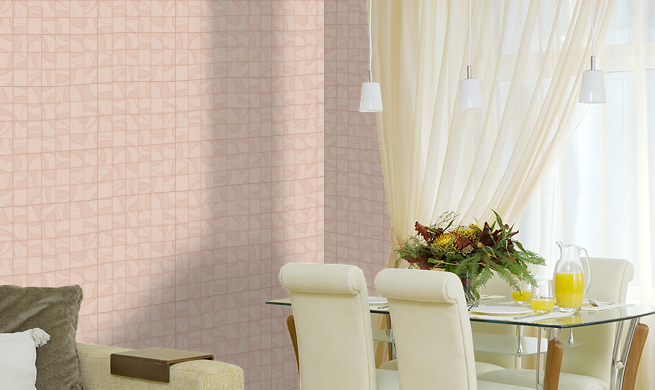
There are vinyl wallpapers with micropores for better breathability, but they also do not allow us to talk about the environmental friendliness of the material.
Interesting. The first vinyl wallpaper appeared in 1947 (manufactured by the United Wallpaper company).
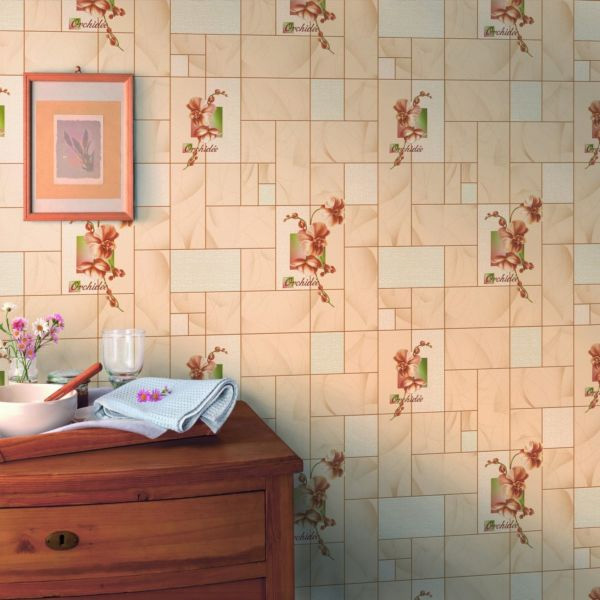
Vinyl wallpaper has a wide variety design solutions. They can imitate tiles, wood, leather, fabric. They even produce special ones.
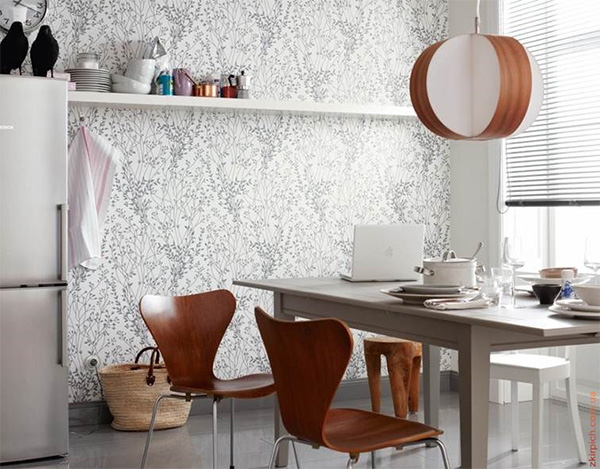
Vinyl wallpapers are:
- Foamed. Embossed, dense wallpaper. Due to their heterogeneous structure, they mask wall defects well. But not very moisture resistant. It is better to glue in non-residential premises.
- . Suitable for treating walls in the bathroom and kitchen.
- Silkscreen printing. The second wallpaper layer contains silk threads. Pearlescent, silky to the touch, do not fade for a long time. Much more expensive than other vinyl wallpapers.
The service life of vinyl wallpaper is up to 10 years.
How to glue vinyl wallpaper?
The glue is applied to the wallpaper, left for three to five minutes, and then the wallpaper is applied to the wall. No need to overexpose, otherwise paper base will spoil. For vinyl wallpaper, a special adhesive for heavy wallpaper is suitable.
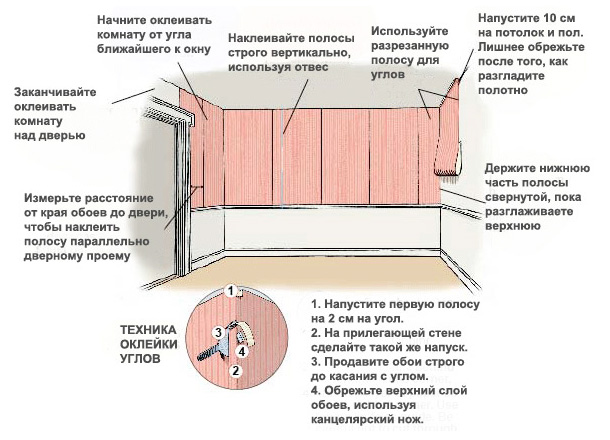
At least two people are needed to hang vinyl wallpaper. If you do not have experience working with this finishing material, it is better to hire professionals.
Non-woven wallpaper
Unlike two-layer vinyl, non-woven wallpaper is uniform, made from natural material – fibrous cellulose. Therefore, they allow the walls to “breathe” - the air in the room will not be “stagnant”.
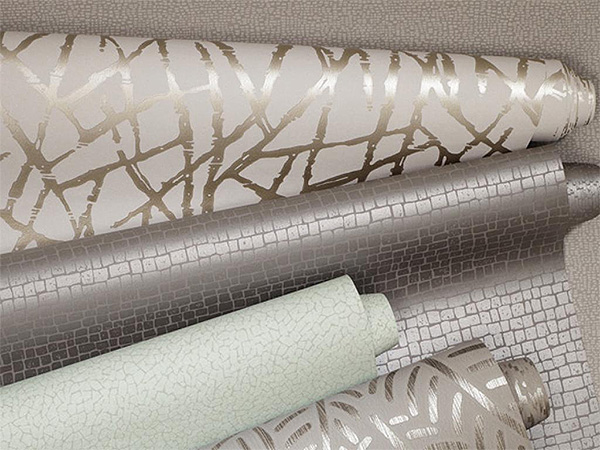
By the way, some items of clothing are trimmed with non-woven fabric. The edges of blouses, suits, some outerwear. This is done to ensure that the product keeps its shape. The same property is valued in non-woven wallpaper.
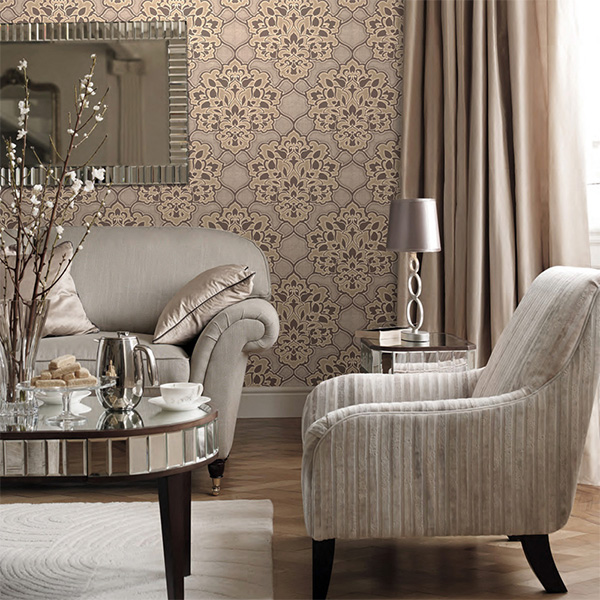
Non-woven wallpaper perfectly disguises wall unevenness, microcracks, there will be no need to plaster and level the surface before installation.
The design variety is not as great as vinyl ones. Most often they are smooth and plain, although there are also reliefs, patterns, and embossing.
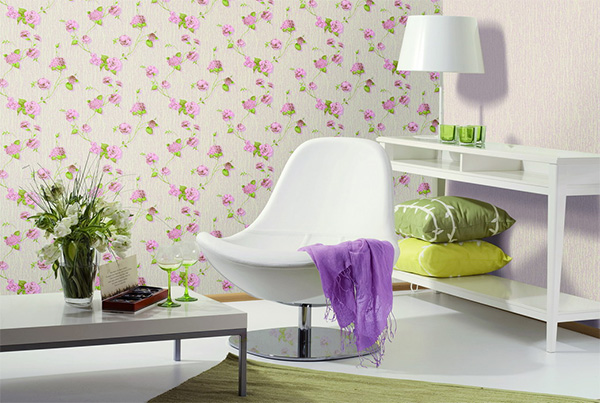
Significant advantages of wallpaper made from this material: during the next repair, you don’t have to tear off the wallpaper, but apply the next wallpaper layer to the old non-woven wallpaper.
Any non-woven wallpaper can be painted. Even if they don’t have a special mark about it. Paint will only strengthen the structure of the wallpaper.
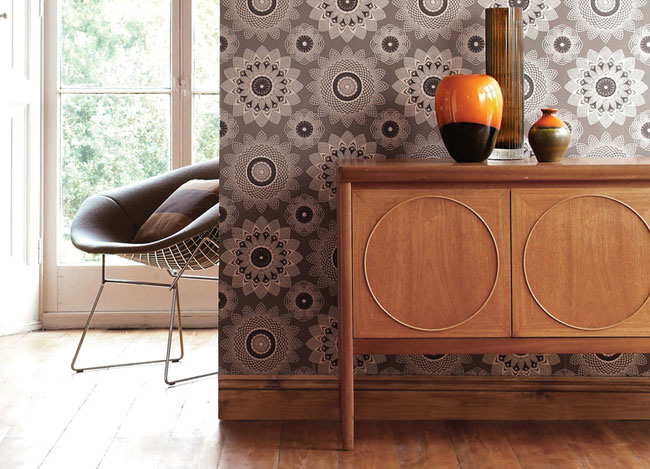
But the disadvantages can be determined by their cost. Non-woven wallpapers are an order of magnitude more expensive than vinyl ones.
Another disadvantage is instability to mechanical damage. Non-woven wallpaper will be easy prey for pets and children.
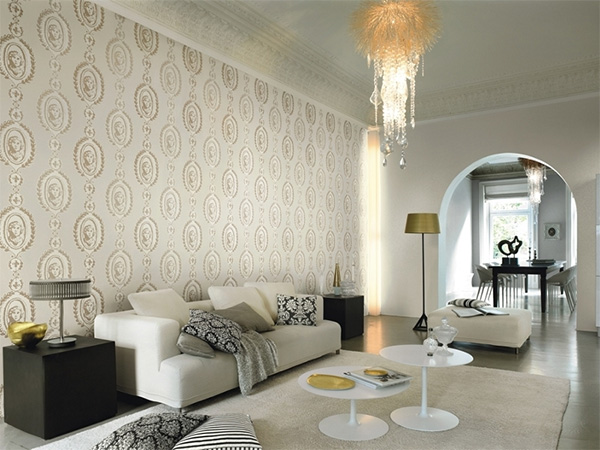
The service life of non-woven wallpaper is the same as that of vinyl - up to 10 years.
How to glue non-woven wallpaper?
Non-woven wallpaper is easy to use. The glue is applied directly to the wall. The wallpaper is glued end to end. Choose a special glue for heavy wallpaper.
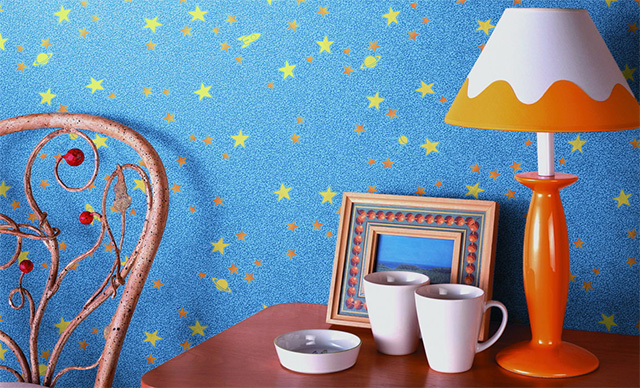
Non-woven wallpaper is denser and more uniform, so it does not tear or stretch like vinyl.
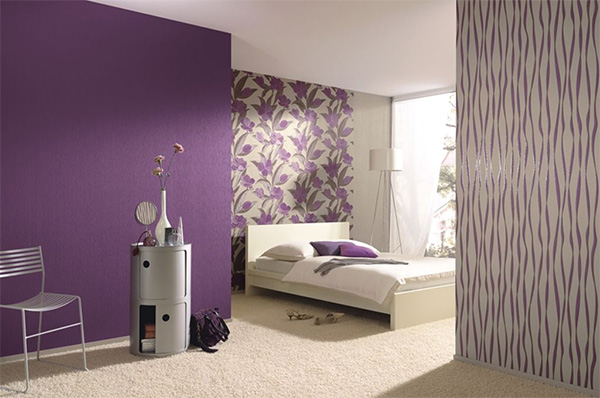
Wallpaper does not shrink after gluing. This is an important fact for the happy owners of an apartment in a new building. Because the walls of new buildings can shrink over time.
Even a beginner can handle gluing non-woven wallpaper. So if you do not have experience in such work, choose non-woven wallpaper.
Vinyl wallpaper on non-woven backing
Not so long ago, manufacturers combined the advantages of two types of wallpaper - and released vinyl coating.
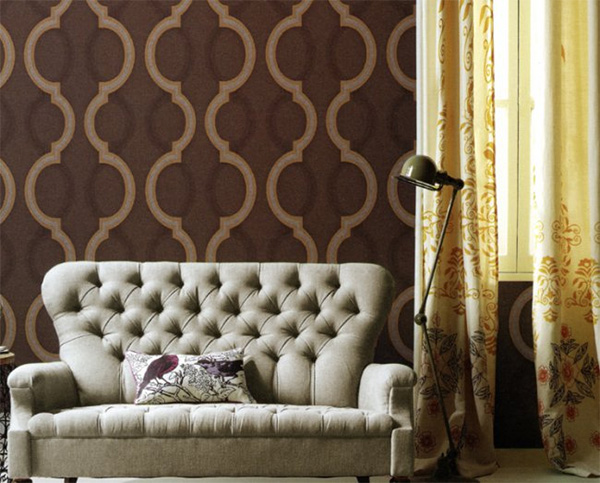
What is the advantage of mixed type?
- Can be wetted or washed using cleaning products.
- Convenient to glue. The technology is the same as with non-woven wallpaper.
- You can paint up to five layers of paint. Wallpaper will mask the roughness and defects of the wall, so there is no need to first level, plaster or putty the wall. Choose acrylic or water-dispersion paint.
- The vinyl layer does not absorb dust, unlike, for example, paper wallpaper. This is relevant for asthmatics, allergy sufferers and all people who care about their health.
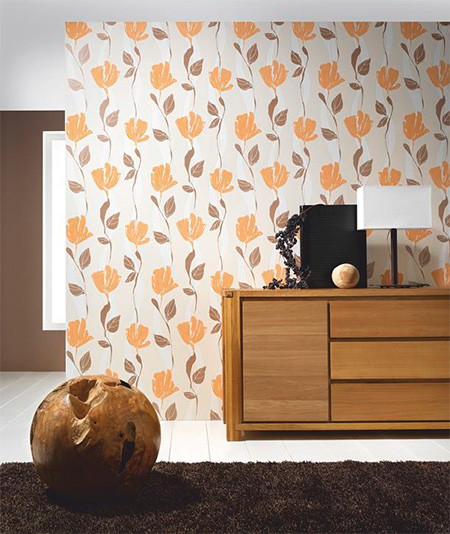
Unfortunately, the breathability of such wallpaper is low due to the vinyl layer.
Despite the abundance of finishing materials, wallpapering walls remains the most common method of decoration. By gluing wallpaper, you can very quickly transform the room: make the room bright, “revive” the interior or add style accents.
To get the desired result, you need to choose the right wallpaper and follow all the rules repair work.
Choosing a finishing material: features of different types of wallpaper
The process of wall finishing begins with the choice facing material. If you make a choice in favor of traditional wallpaper, you need to decide the best option. All types of wallpaper presented on the construction market have certain characteristics. Based on the qualities of the material, the conditions of their use and personal preferences, you need to make a choice.
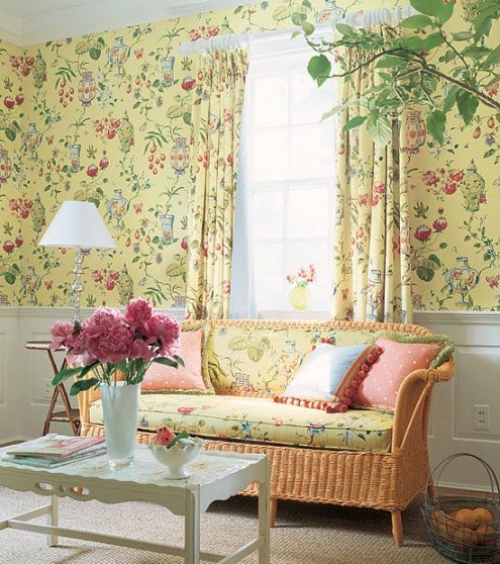
Paper wallpaper- the most popular type of wallpaper in the world. Canvases have many advantages, but when using them, some disadvantages also appear. The main advantages include:
- loyal pricing policy allows you to frequently update the interior of the room;
- wide selection of colors and patterns;
- environmental friendliness and hypoallergenic material - wallpaper is ideal for children's rooms;
- the material allows air to pass through well, thereby preventing the formation of mold.
Disadvantages of paper products:
- wallpaper quickly loses its original appearance- fade under the sun's rays, wear out and wear out;
- most paper wallpaper cannot be washed;
- This material is not suitable for use in “wet” areas.
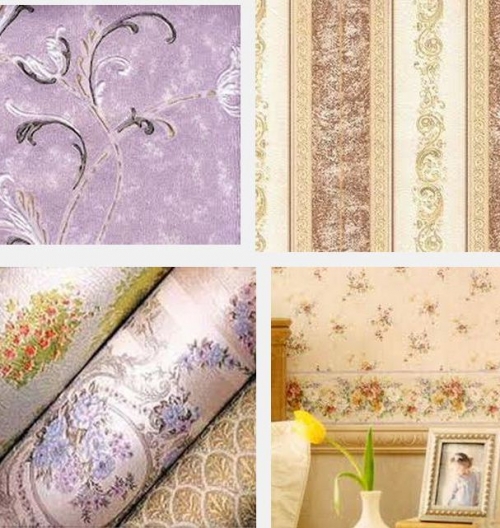
Advice. When planning to cover walls with paper wallpaper, it is better to choose modern duplex (two-layer) canvases. They are stronger and less susceptible to contamination. Some duplex wallpaper can be washed.
Vinyl wallpapers. The main advantages of the finishing material: moisture resistance and beautiful appearance. Such wallpaper is based on non-woven fabric or paper, the top layer is treated with polyvinyl chloride. Vinyl wallpapers are available in a wide range of patterns and textures (embossed).
Vinyl coating protects decorative finishing from sunlight, humidity and reduces the attraction of dust. This wallpaper is best suited for the hallway, bathroom and kitchen. Most PVC sheets are suitable for painting.
The disadvantage of vinyl wallpaper is poor permeability. PVC film does not allow air to pass through, the walls do not breathe. As a result, the microclimate in the room worsens, the room must be ventilated more often.
Important! Some manufacturers use innovative technologies and produce wallpaper with a vinyl coating that has a porous structure. This allows the material to allow sufficient air to pass through.
Vinyl wallpaper is not cheap, but its high cost is fully compensated by its long service life - the coating retains its decorative effect for up to 10 years.
Today, several types of vinyl wallpaper are used:
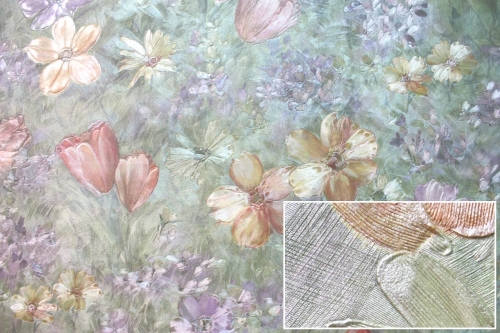
- hard vinyl coating - a hard base is applied to the base that can withstand significant mechanical damage;
- smooth vinyl coating - forms a smooth, even surface that is more susceptible to damage;
- silk-screen printing is one of the most spectacular types of wallpaper; hot stamping technology creates the impression that the wallpaper contains natural silk threads;
- foamed vinyl - considered the most durable and dense, thanks to its deep relief structure.
Non-woven wallpaper are made on the basis of cellulose and consist of 2 layers: non-woven fabric and a polymer coating. The combination of the two layers resulted in the following characteristics:
- high strength - non-woven wallpaper is stronger than textile and paper wallpaper;
- the ability to hide wall unevenness and microcracks;
- wallpaper is easy to apply - if the technology is followed, the material will not deform or bubble;
- air passage;
- choice of wallpaper texture - embossed or smooth;
- wallpaper fits well on plaster, wood, cement, slabs and other materials.
Important! Distinctive feature Pasting with non-woven wallpaper - fastening to a wall covered with glue.
Textile wallpaper are produced on the basis of flezilin and paper. On top, the base layer is covered with textiles (jute, polyester, linen, cotton, etc.). It is the top layer that largely determines the final cost of the finishing material. Fabric wallpaper not only plays a decorative role, it also has noise and heat insulation properties.
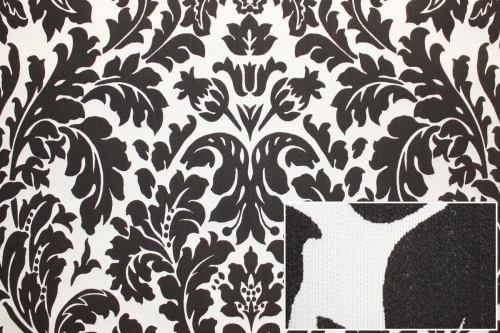
With the help of such wallpapers you can create original interior. However, they also have negative sides:
- demanding when gluing - it will be difficult for an inexperienced craftsman to complete the work;
- intolerance to wet cleaning limits the scope of use of textile wallpaper.
Fiberglass wallpaper- wall covering made from glass fibers of different thicknesses followed by impregnation. Fiberglass wallpaper is a unique finishing material that has a number of undeniable advantages:
- fire properties;
- naturalness and safety of use;
- high strength and resistance to any damage;
- durability - service life of about 30 years;
- repel dust and are easy to clean;
- Due to the fabric structure, air is allowed to pass through.
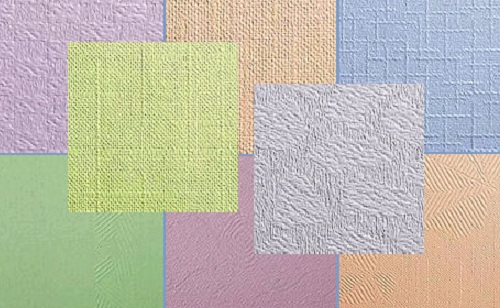
How to properly glue non-woven wallpaper: step-by-step instructions
Preparing the base
The process of pasting any wallpaper, including non-woven wallpaper, begins with careful preparation of the walls. This stage takes a lot of time, but the final result largely depends on the quality of its implementation. What events are required? The previous coating from the walls must be removed and the surface leveled.
Removing old wallpaper. To soften the coating, you can use a regular soap solution. To improve the effect, it is advisable to add a little wallpaper glue. Washable old or very thick wallpaper must first be trimmed a little, scored, and then moistened with soapy water. After this treatment, leave the wallpaper for a while - the coating will swell and can be easily removed with a spatula.
Sometimes the procedure has to be repeated several times. To make it easier to remove wallpaper, you can purchase special remedy, developed for this purpose - the solution is well absorbed and “softens” the material.
Enamel removal and old paint . In “Khrushchev”, “Stalin” and Brezhny era apartments, walls covered with paint are often found. If the coating peels off well, then it is cleaned off with a spatula. However, in the vast majority of cases, removing old paint requires a lot of effort. The enamel is tapped with a hatchet and cleaned off using a flat cutter or chisel.
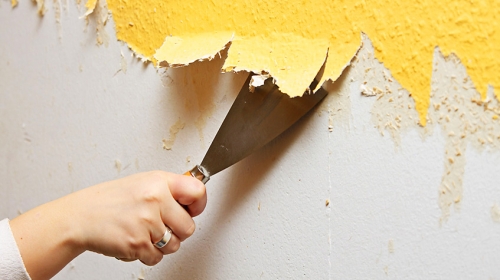
Removing whitewash. Water-based emulsion paint or whitewash is pre-moistened with soap and water and then removed with a spatula. A thin layer of old whitewash can be easily washed off with hot water.
The next step is leveling the walls. All irregularities, cracks and other defects must be plastered or puttied. If the surface crumbles and crumbles, it is advisable to treat it with a bonding primer.
Necessary tools
To complete the work you will need:
- roulette;
- laser level or vertical plumb line with cord;
- roller with long pile;
- brush for smoothing wallpaper;
- plastic spatula with a soft edge for rolling wallpaper;
- construction knife for cutting wallpaper;
- metal spatula (narrow);
- foam sponge;
- glue tray;
- pencil;
- ladder.
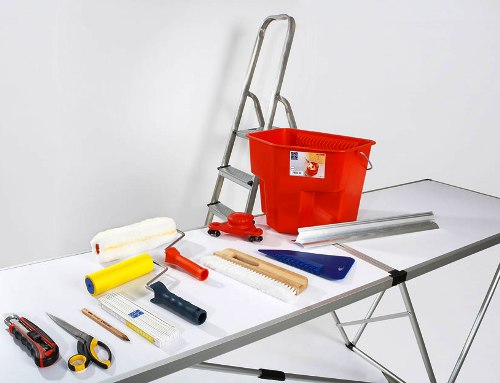
Calculation of material and marking of walls.
To calculate the required amount of wallpaper, you should know the dimensions of the room. As a rule, the height of the ceilings ranges from 2.5-2.8 m, the length of the roll is 10 m. That is, one roll should be enough for three strips. Knowing the width of the roll and the perimeter of the room, you can easily calculate the total number of strips.
Most non-woven wallpapers have smooth, high-quality edges. That's why they are glued end to end. At the same time, the connection of the panels looks like a single solid surface. To facilitate further work, it is advisable to apply markings.
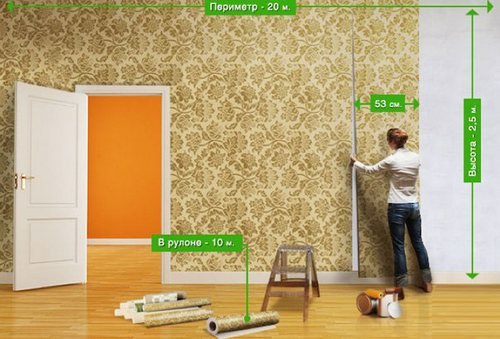
From the corner of the room, at a distance equal to the width of the roll (0.5 - 1.2 m), draw a vertical line. Use a level to check evenness. Lines are drawn along the entire wall.
Stages of wallpapering
Important! Before cutting the next panel, you should measure the height of the walls in different places, for example, every 30-40 cm. Very often the walls have differences and the length of different cuts can differ significantly from each other.
If the wallpaper has large drawing, then it must be selected. You can check the fit size from the pictogram on the label. When marking and cutting, it is important to control that the image matches and that you do not have to add a piece of canvas from the bottom or top.
For example, if the required fitting size is 48 cm, and the ceiling height is 2.5 m, then the length of each blank will be 2.88 m. According to the rules for “cutting” wallpaper, the length of the blank must be a multiple of the fitting size, i.e. 48 cm, but not less than the height of the room.
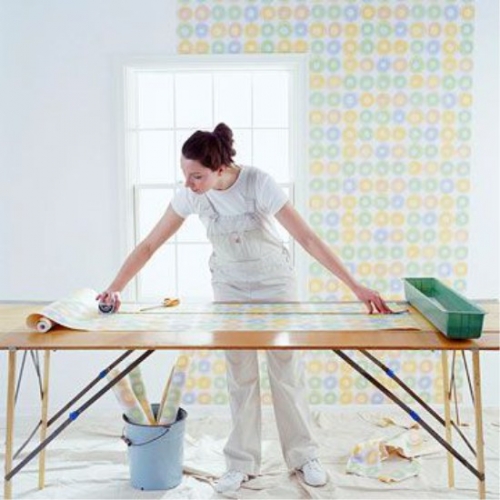
After making the calculations, you can start cutting. Cover the floor with plastic wrap and roll out the roll face down. Measure the length of the cut (in our example - 2.88 m) and make a notch with a knife. Using a long ruler, bend the wallpaper at the level of the notch, check the evenness of the fold and cut off the sheet.
Spread the next sheet and check the fit of the drawings of the two canvases. If the workpieces fit together well, then you can cut.
Glue preparation. To apply wallpaper, you need to choose an adhesive composition that matches the type of material: paper, vinyl, non-woven fabric, textile or fiberglass. Before mixing the glue, read the instructions.
General procedure for preparing glue:
- Pour the dry mixture into a mixing container.
- Gently introduce water into the powder in a thin stream, stirring with a whisk.
- Leave the mixture to sit and stir again, removing any lumps.
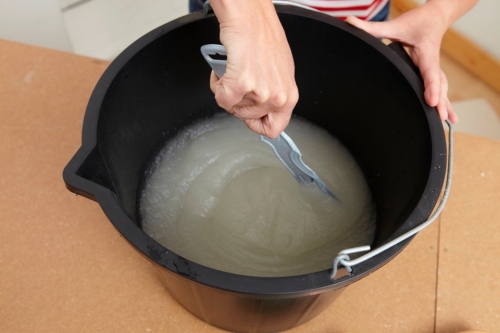
Wallpapering. Direct pasting of walls is carried out in the following sequence:
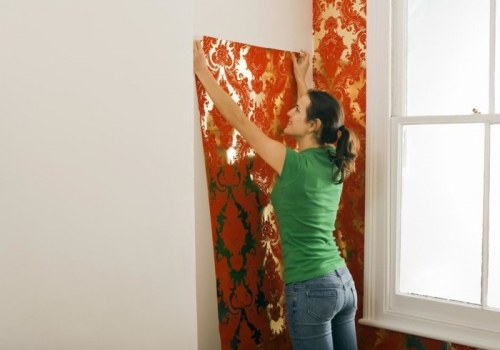
How to glue wallpaper correctly: video
How to properly glue vinyl wallpaper: nuances of doing the job
The procedure for gluing vinyl sheets is not much different from gluing non-woven wallpaper. However, several nuances can be highlighted:
- The choice of glue must be approached responsibly. Vinyl wallpaper has the ability to stretch when glue is applied and shrink after it dries. A poor-quality adhesive composition may not cope with such a load and the seams will simply come apart.
- When gluing, a moderate amount of glue is applied to the walls to prevent excessive stretching of the canvas.
- In some cases, it is allowed to apply glue not only to the surface of the wall, but also to the canvas itself.
- Particular attention is paid to the seams. They must be carefully rolled out with a roller so that they do not come apart.
How to glue wallpaper correctly: photo of the joining of the canvases
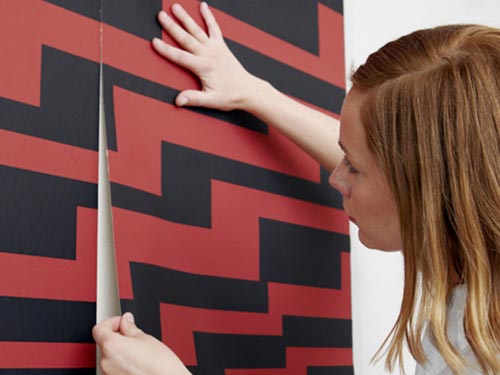
How to properly glue paper wallpaper: features of cutting and gluing
The technology for covering walls with paper wallpaper depends on its type: simplex or duplex. Single-layer simplex wallpaper is only suitable for ideal smooth walls- the canvas is very thin and all the cracks and holes will be visible through it. The installation of such wallpaper is done with an overlap. Duplex is glued end-to-end only.
The main requirement that must be met when working with paper wallpaper: after applying glue to the sheet, it must be left to “mature” for 2-7 minutes (the time depends on the density of the material).
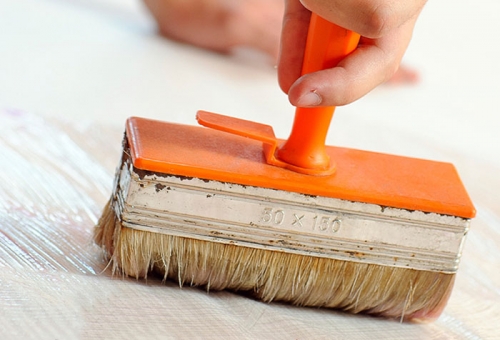
When cutting wallpaper, pay attention to the presence of an edge. Some foreign manufacturers produce wallpaper with an edge on only one edge, while domestic ones produce wallpaper on both edges. For thick wallpapers that are glued end-to-end, the border is cut off on both sides; for thin wallpaper, on one side. It is convenient to cut the edge on a chair - the unnecessary edge is removed, and the wallpaper is rolled back into a roll.
Another nuance when working with classic wallpaper- decoration of walls with borders. You can glue the decor only after the wallpaper has completely dried. It usually takes 12-32 hours for the paper to dry. This period depends on the amount of glue applied, the density of the material and room conditions.
How to wallpaper corners correctly
Pasting the outer corner:
- Measure the distance from the last strip of wallpaper pasted to the corner.
- Cut a sheet of wallpaper whose width is 2.5 cm larger than the measured distance.
- Glue the strip, bending the excess wallpaper to the opposite angle.
- At a right angle, the remainder is glued end-to-end, in other cases - overlapping along the vertical markings.
- Use a sharp knife to go along the corner, applying a ruler. At the same time you need to press the edges. Remove trimmings.
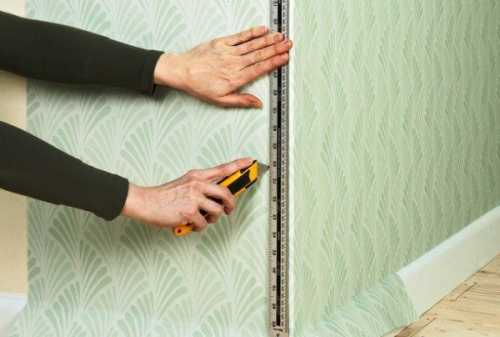
Inner corner finishing:
The main rule: you should never lay a whole piece of wallpaper on a corner. If this condition is neglected, then folds and bulges are formed.
- Measure the distance from the corner to the last strip of wallpaper and add 2 cm.
- Cut the desired piece of wallpaper and glue it to the wall, taking the corner.
- Press the paper firmly against the wall by running a blunt object across it.
- Seal the remaining piece with a cut with a slight overlap onto the adjacent wall.
- Apply a ruler to the joint of the walls and run a knife, removing excess material.
How to glue wallpaper end-to-end in the corners: video
How to properly glue fiberglass wallpaper
When gluing with glass wallpaper, it is important to follow some rules:
- The glue is applied to the wall, not to the canvas.
- To work, you need to use glue for heavy types of wallpaper.
- At first glance, fiberglass wallpaper has equivalent surfaces, but this is not so. The front side, according to international standards, of the roll faces inward. The reverse side of some manufacturers is marked with a blue or gray stripe.
- The time for complete drying of glass wallpaper is 24 hours.
- After drying, the wallpaper can be decorated and painted. It is advisable to pre-prime the surface - this contributes to economical use decorative material and paints.
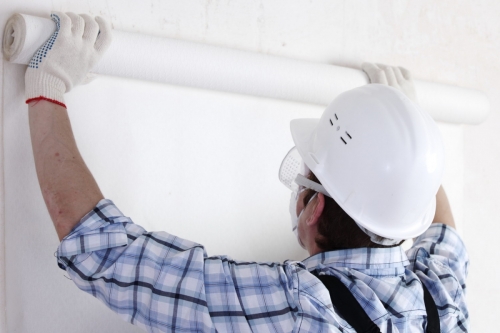
- Before wallpapering walls or ceilings in damp rooms, the surface must be treated with a fungicidal mixture - this will protect the coating from the appearance of fungus.
- The readiness of the walls before gluing can be checked experimentally:
- Glue a piece of polyethylene to the wall with tape;
- leave the cellophane for a day;
- if after 24 hours perspiration appears inside the film, it means it is too early to start pasting; if the cellophane remains dry, then the wall is completely dry and ready for further finishing.
- To avoid the appearance of wrinkles and bubbles, pasting must be performed under the following conditions:
- It is advisable to perform work at a temperature of 23-25°C;
- walls that have just been covered with wallpaper must be protected from drafts until the coating is completely dry;
- It is extremely undesirable for the wallpaper to be exposed to sunlight.
How to properly wallpaper a ceiling: video
Sooner or later, you can put wallpaper on any apartment or house, as the walls lose their proper appearance. What should you do if you have to work in winter or use a fabric such as fiberglass and have uneven walls? It is necessary to carefully study the entire process of updating the wall covering to avoid mistakes and defects.
How to glue meter-long wallpaper
The most popular are meter-long wallpaper, the sticker of which can be carried out by one person, and whitewash with color can be applied on top of it.
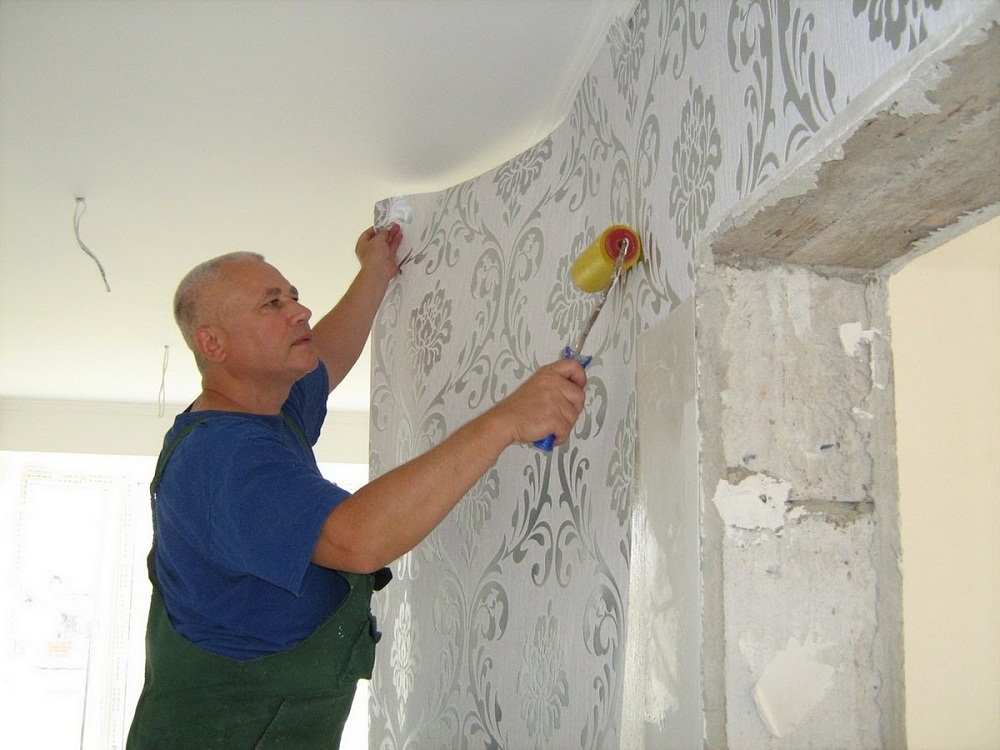
In order for gluing to proceed correctly, you should follow several rules and recommendations:
- The wall is covered with glue, which is prepared in advance.
- The first sheet of wallpaper is adjusted in height, but there should be a hem on top, which will be cut off after drying. The lower part of the canvas is also folded and removed.
- Next, smoothing of the wallpaper is required to remove air accumulations using a wallpaper roller or rubber spatula.
- While smoothing is taking place and the canvas dries a little, you can cut off the unnecessary part using a stationery knife.
- If the cutting line begins to jiggle, then you should postpone this moment until later and continue gluing.
- If, when probing the canvas, voids are found, then you need to disconnect the sheet from the wall to this place, coat the wall with glue and repeat the entire process described above.
At what temperature can you glue wallpaper?
There are many opinions regarding the temperature at which wallpaper can be properly glued without causing defects. Any repairman will tell you what to paste over concrete walls It is necessary to follow some recommendations, and then the weather outside the window will not affect the final result.
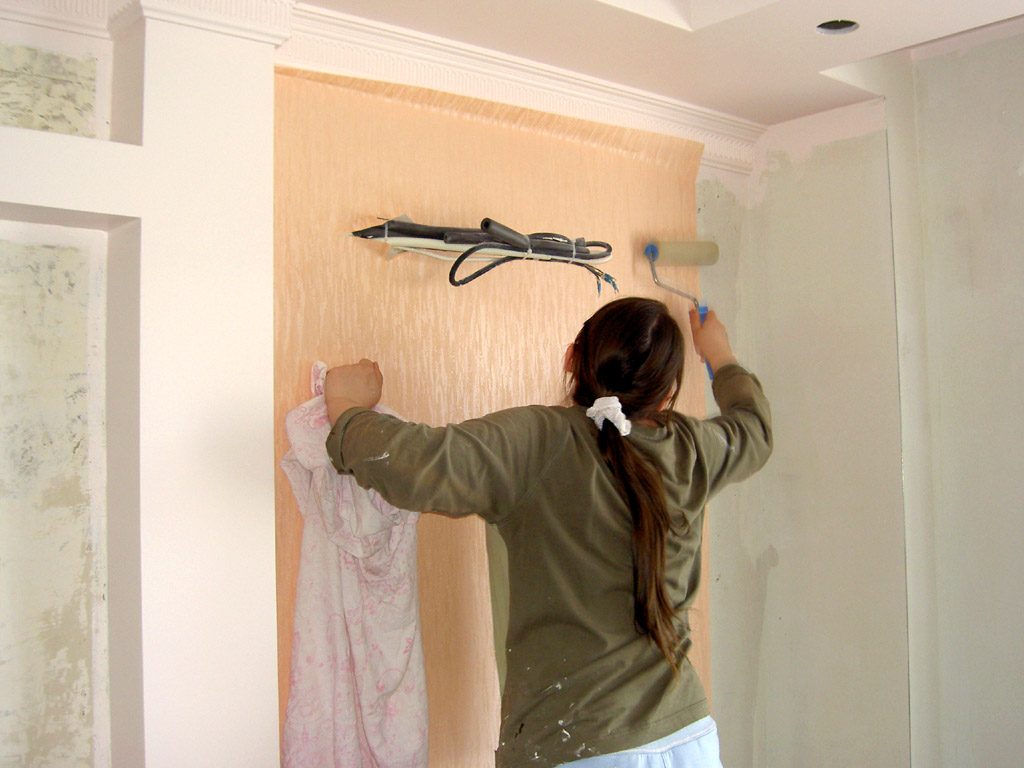
- Regardless of where wallpapering takes place in an apartment or house, the temperature level should be no less than 10 and no more than 25 o C. This temperature is enough for the wallpaper to dry and stick tightly.
- The humidity level in the room should not be more than 60%. If the humidity is higher, the glue will begin to become saturated with it and the properties of the composition will be significantly reduced.
- When gluing wallpaper above a radiator or opposite, when direct ultraviolet rays hit the wall, you should be as careful as possible. It is advisable to turn off the batteries until the room is completely dry, and curtain the window, as otherwise the glue will dry too quickly and the wallpaper will become crusty, which will ruin the proper appearance of the room.
- The room must absolutely not be opened until the pasted canvases have dried. Any draft can cause repeated finishing work.
What you need for wallpapering
What tools are needed for wallpapering? It is worth paying attention to the inventory list before starting work so that everything is at hand.
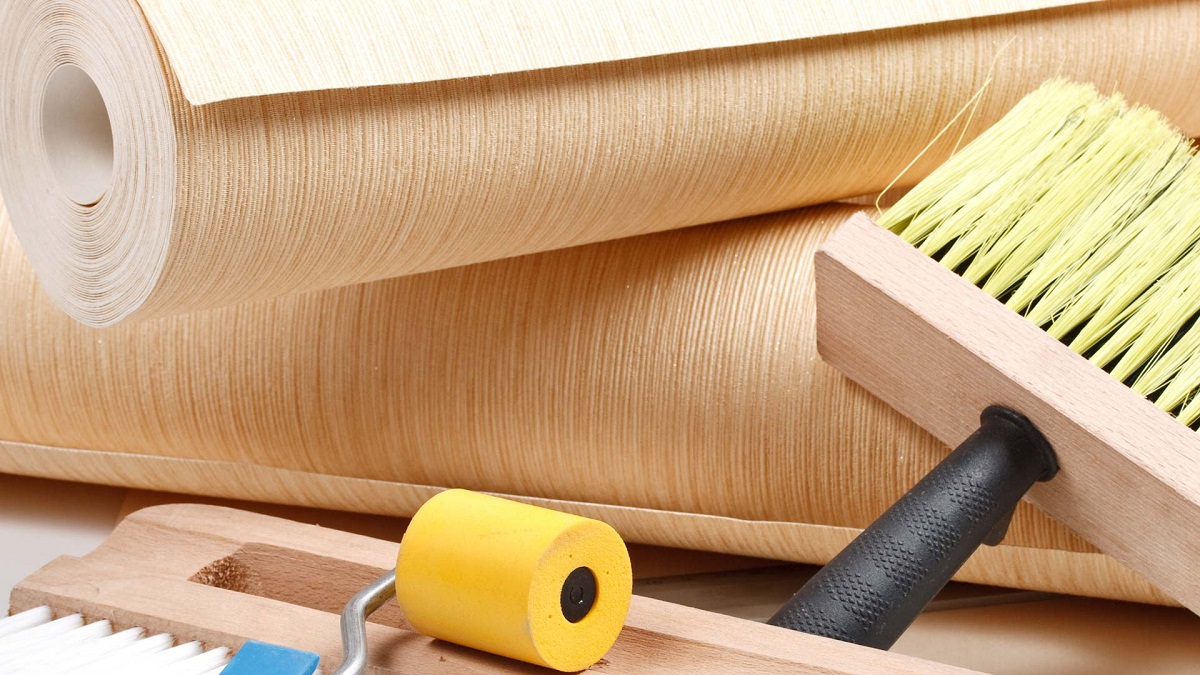
To paste over the walls, you will need the following tool:
- Bucket;
- Ladder;
- Roller;
- Brush;
- Ruler or level;
- Stationery knife;
- Pencil or chalk;
- Wallpaper brush;
- Roulette;
- Roller for leveling joints;
- Screwdriver and electrical tape;
- Sponge.
Paste simple wallpaper easy, but drawing is not easy for non-professionals. Adjusting a picture is far from easy for someone without work experience, especially alone. It is worth noting that when using printed material, you must immediately prepare for the fact that more costs will be required and there will be scraps left over.
The step between repeating a pattern can be very different, and, as a rule, you can familiarize yourself with it on the label of the canvas.
To decorate a living room or bedroom, you will need to purchase 3 more rolls than expected. square meters. You should not think that if the gluing is carried out behind the cabinets and without selection, then so much material will not be required, since the essence will remain the same.
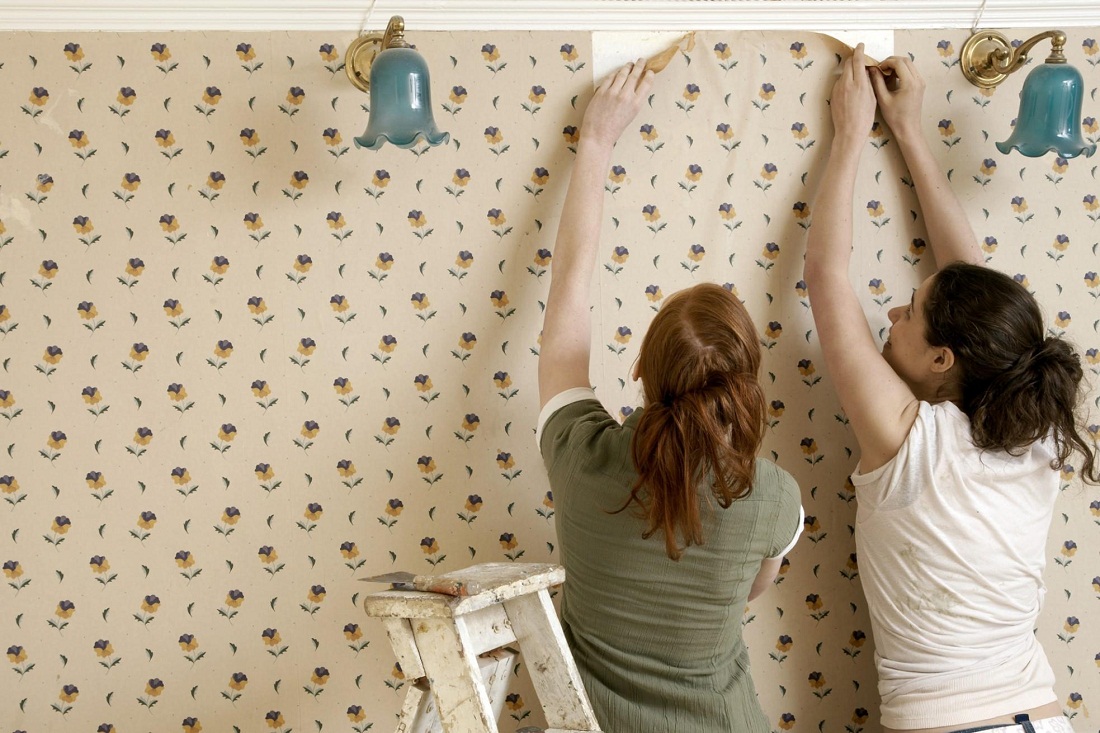
In addition, you need to select a design on three rolls at once, which will reduce both time and excessive costs and leftovers. When purchasing, you should pay attention to the batch, since different numbers can cause a lot of problems during repairs. Perhaps the difference is in shade or even in the width of the pattern.
Before gluing the canvas, it needs to be cut off with an allowance, which will then allow you to cut the upper and lower boundaries clearly in level. Naturally, it is better to adjust the print on the floor and on dry canvases, which is much more convenient and hassle-free. Professional technology for high-quality pasting of canvases begins with a drawn mark along a vertical wall. In this way, too much error can be avoided. In addition, it is extremely inconvenient to pull a wet canvas along the walls in order to achieve a normal slope.
It’s not uncommon in apartments to have uneven walls, which can sometimes be visually hidden with wallpaper, but sometimes not. In this case, if you want to do high-quality repairs, you must first take care of leveling the surface. This can be done using a material such as rotband, but this is with minimal protrusions. For larger problems, you can use plywood, OSB, chipboard, MDF, and plastic panels PVC. With their help, it is much easier and quicker to finish the room.
PVC panels are considered a practical material, but do not tolerate mechanical stress, since their surface is very fragile.
Which wallpaper is easier for non-professionals to hang?
Experts believe that repair work should be carried out by professionals, but if you still want to do the repairs yourself, and do not have any special skills, then it is much better to choose those materials that are easier to handle. It is not advisable for pregnant women to work with wallpaper, as this can cause premature birth. Fever in the air and physical labor are not desirable for such representatives of the fair sex.
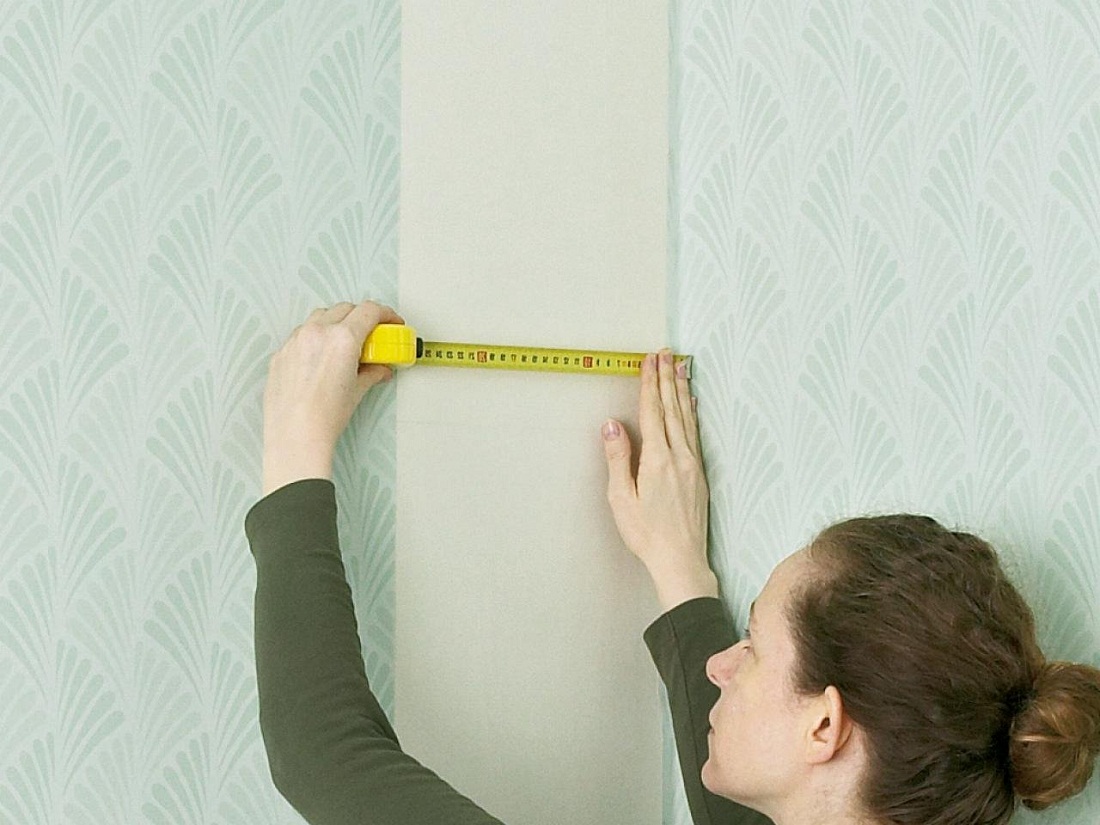
Non-professionals should not use these Additional materials, How:
- Newspapers;
- Baguettes;
- Tiles.
Moreover, there is no need to try to write patterns on wide whitewashed wallpaper yourself, as it may not look as expected. A room covered with wallpaper with a single pattern and one color is not at all boring if you choose the right shade, as well as textiles and furniture to match it. Beginners find it easier to work with narrow wallpaper, but meter-long non-woven fabrics are in no way inferior to them. If the repair is carried out by two people, then preference should be given to wide wallpaper.
Since they are more:
- High quality;
- Sustainable;
- Durable;
- Durable.
The peculiarity of wide wallpaper is that its texture allows you to hide the unevenness of the walls and the joints themselves. Accordingly, it is possible to create something that is not realistic beautiful view living room and will create the impression of integrity and elegance. However, meter-wide wallpaper is not so easy to apply to a small room. For example, a kitchen or a corridor. Considering how many bends there are, sometimes there is a desire to completely erase the walls decorative plaster and simply paint it later in the desired color, which can be accessible to beginners. Working with the material is not difficult and does not require special skills, provided that the plaster is of the highest quality.
Low-quality materials will begin to crumble even during installation, which will significantly spoil the final result.
Wallpaper gluing technology
The technique for gluing wallpaper is generally the same, since the canvas is applied exclusively vertically and not horizontally, with the exception of ceiling decoration, which is quite rare. Before work, you need to cut the canvases and fold them with the back side facing up. This will make it easier to apply the adhesive. Coating of the canvases is carried out using a special wallpaper brush. As a rule, after the glue is applied, the wallpaper can curl, and therefore you need to press down the edges of the canvas with heavy objects. For the glue to saturate the wallpaper, it only takes 1-3 minutes, depending on the canvas.
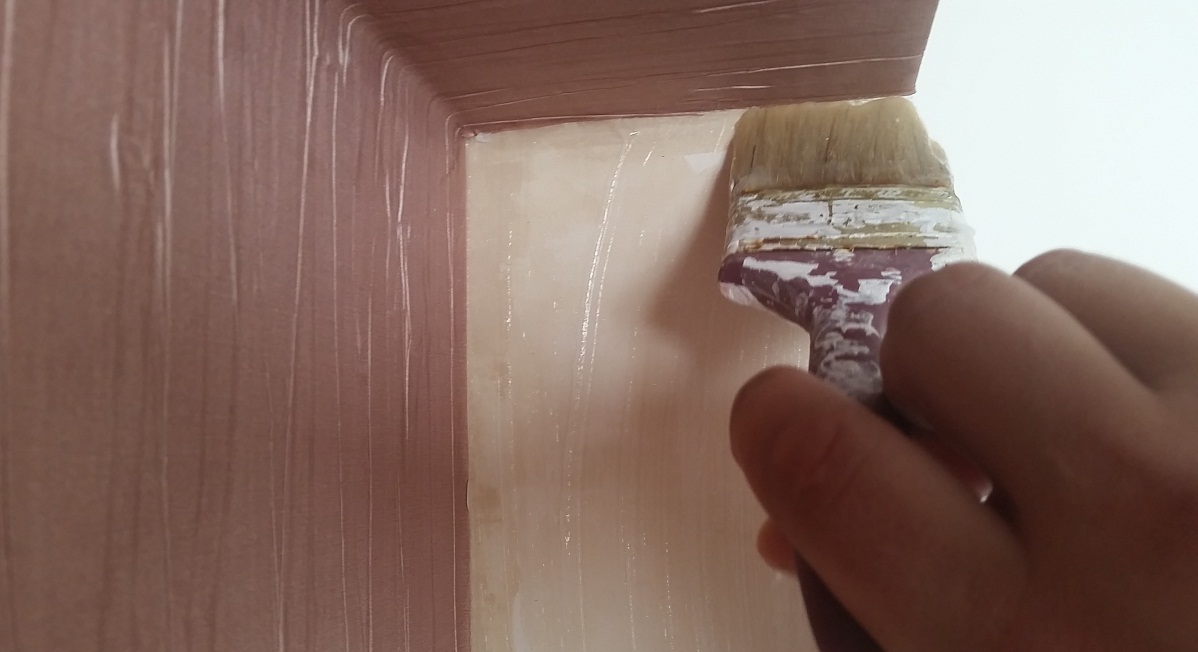
Modern designers began to come up with the most various ways wallpapering, for example:
- Obliquely;
- Circular;
- Horizontal;
- Patchwork.
But classic style is the most optimal and most often in demand, especially by non-professionals. If you want to combine the two, then you should first purchase a product such as border tape, which will help hide joints and sharp transitions. Ideally, carry out repairs and Finishing work You need two people, since one person holds the canvas, the second glues and rubs it. Wallpapers vary not only in type, but also in weight. For example, silk-screen printing is the heaviest canvas in the world and it can be difficult even for two people to handle such material. It is better to entrust such work to a master. Thick wallpaper is glued end-to-end, since overlap will create thick folds, which is not the norm.
Important! Before gluing the wallpaper, the baseboards are removed, and after drying, they are installed back.
After the sheets are glued, you need to wipe each sheet with a dry sponge. This will remove any remaining glue, smooth out the joints, and remove any unevenness. If you purchase high-quality glue, then several hours are enough for complete drying, provided that optimal temperature and air humidity. The glue must be selected according to the type of wallpaper, otherwise there may be problems with drying and even with gluing.
When is it better to glue wallpaper, winter or summer?
You shouldn’t look for a special time of year to glue wallpaper, since the defect can be repaired regardless of the weather conditions or temperature in the room, but for a global renovation, you should think about choosing the right period.
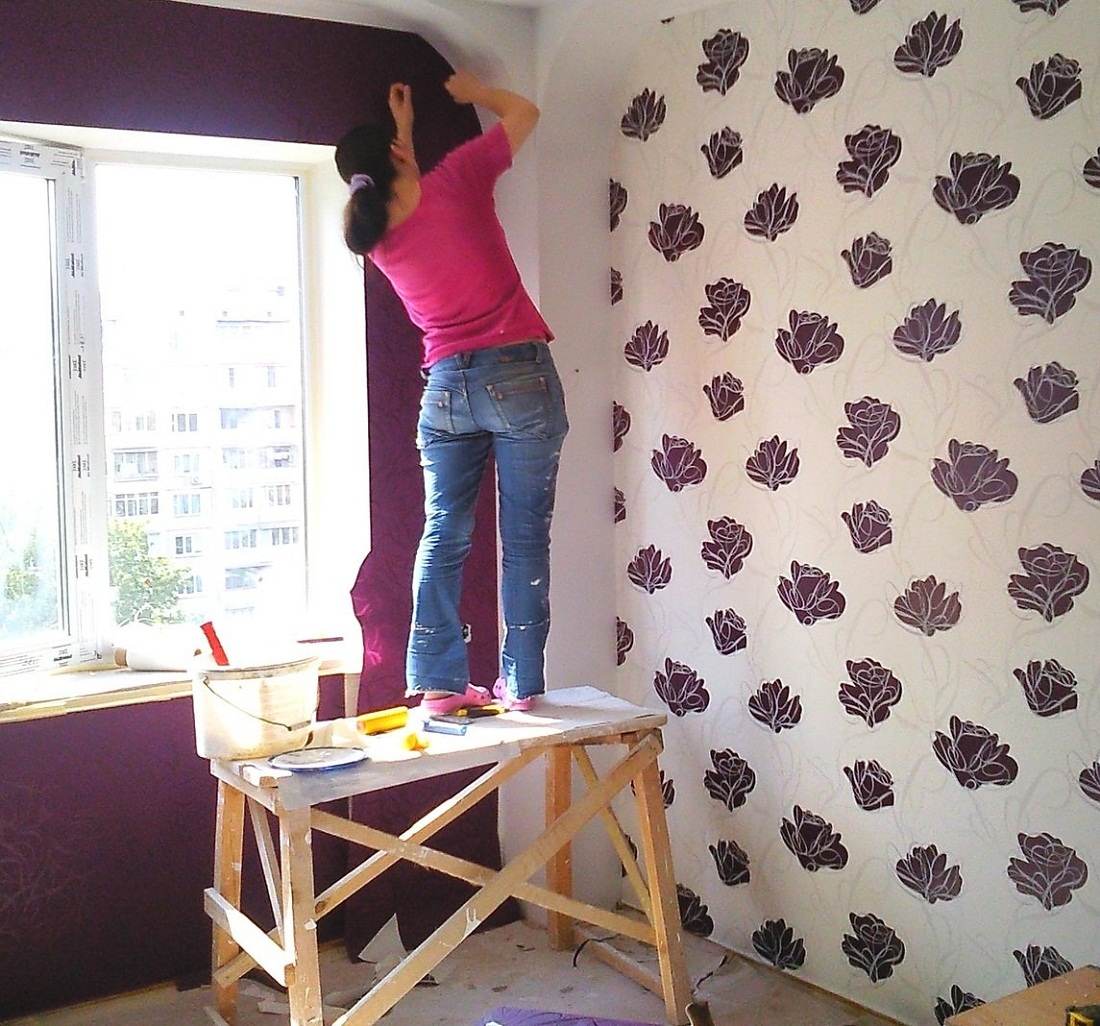
To easily cope with repairs, both in summer and in the cold months, you need to pay attention to a number of tips:
- Both high and low temperatures are equally dangerous for wallpapering a room.
- The most optimal level, as mentioned above, is considered to be 15-25 o C.
- When working in hot weather or if it is not possible to turn off the batteries or reduce the supply in winter, it is worth using additional PVA glue, which is added to the main adhesive composition.
- To prevent the wallpaper from falling off the walls due to not too much heating or high humidity, you should also use PVA glue and also take care of installing an additional heat source. If it is a heater, then there should be a container of water in the room to prevent drying out.
- On sale you can often find adhesive compositions specifically for working in difficult conditions with high humidity or low temperature.
- Do not forget about the primer to increase the adhesion of the canvas to the wall surface.
How to glue wallpaper (video)
There are many opinions and even stories about how it is easier to glue wallpaper, etc. We will try to help you with your choice, based on the properties different types wallpaper We will also give advice to those who are planning to hire workers to carry out repair work. And we’ll tell you how to save money on this.
So, as many already know, wallpaper has two common bases: non-woven and paper. So, non-woven fabric has many more positive characteristics compared to paper. It sticks dry. You can read more about all the advantages. What does dry mean? This means that special glue is applied directly to the wall, and then the wallpaper is applied to the surface to be pasted. There is no need to apply glue to the wallpaper! This gives us speed and convenience in pasting. We don't need to roll out rolls on the floor. No need to measure and cut. And there is no need to even smear them with glue and spread dirt on the new parquet. Everything happens quickly and as accurately as possible. This is why builders love non-woven wallpaper so much. And, by the way, it is worth noting that quite often they charge a higher price for wallpaper on paper. We answer the question: non-woven wallpaper is easier to glue.
Now regarding the width of the wallpaper. Some buyers are intimidated by wide wallpaper. Wide wallpaper is called non-woven wallpaper with a width of 1.06 meters. The name “meters” is also common, read our post. In fact, the fear is not justified. Firstly, gluing them is much faster. With one canvas you cover a wall that would be covered with two standard 53 centimeter strips. Secondly, you get half the number of joints on the wall and, accordingly, half the hassle of aligning these joints. With the help of such wallpaper, professional builders can renovate a room twice as fast. Again, most likely they will ask for a little less money for repairs with meters than for covering a room with half-meter wallpaper. Result: meter-long wallpaper is easiest to glue.
Did you know that you can be charged more money for wallpapering the walls in the kitchen than for the same work in the bedroom? No, this is not robbery! This increase in cost is quite understandable. The whole point, again, is the ease of repair. The most expensive parts to work with are the kitchen and hallway. And this happens because in these rooms there are a lot of “bulges” and “bulges”, a lot of doors, boxes, cabinets, sinks and pipes. Even if you glue the wallpaper yourself, you will immediately feel that in the living room and bedroom it is glued quickly and easily, but in the kitchen and corridor it is slower and more difficult. Here are some simple tips. Conclusion: It’s easier to glue wallpaper in the bedroom and living room.
Let's sum it up. The easiest way to glue vinyl wallpaper is on a non-woven backing with a width of 1.06 meters. You will not only save your time and effort, but also, if you hire workers, you will also save your money.
Interior decoration is designed to create a feeling of coziness and comfort in a residential space for any purpose, but many materials are not cheap. As for wallpaper, you can use it to create an inexpensive and practical covering, of course, if we are not talking about luxury collections. By doing the work with your own hands, each owner can save a significant part of the budget.
Types of fabrics used
Can be used as a base layer and additional coating various materials. In this regard, novice craftsmen think about which wallpaper is easier for non-professionals to glue.
It’s worth noting right away that there is not much difference, but there are only some nuances that must be taken into account when fixing this or that.
- Paper webs- most economical look products. Individual coating strips may consist of one or more layers. The sheets are fastened using a universal adhesive composition.
- Non-woven wallpaper are an improved analogue of the above products. They are stronger than paper, which reduces the risk of damage to segments during work. Special glue is required for fixation.
- Fiberglass analogues They are a roll covering created using weaving technology from glass fibers of various thicknesses and densities. They are glued to the surface with a special compound for heavy materials.
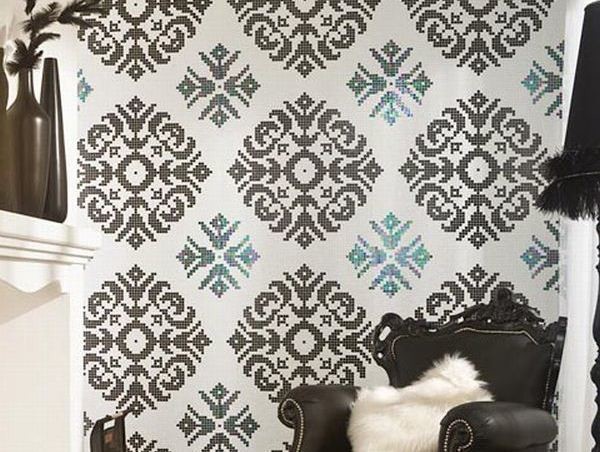
Addition! If a vinyl coating is applied to the base, then the canvases are considered moisture resistant, which means they can be washed. As for the textile layer, it can improve the decorative qualities of the finish.
Determining the number of rolls
Before you learn how to glue wallpaper on whitewashed walls, plaster, wood, OSB boards, drywall and other surfaces, you need to make preliminary calculations. number of packs, you can safely go to the store and make a purchase.
Below is an example with a room 5x6 m, the height of which is 270 cm.
- The first step is to determine the perimeter of the room, for which all sides of the room are added up: 5+6+5+6=22 m.
- After this, the result obtained is divided by the width of the strip to find out the number of fragments: 22/0.53≈42 pieces.
- Next, you should determine the number of canvases in one pack. The length of the roll is divided by the height of the room: 10.05/2.7≈3 strips with remainder.
- At the last stage, the total number of segments is distributed by the number of units of material in one roll: 42/3 = 14 pieces.
Advice! To decorate a room measuring 5 x 6 m with a ceiling height of 270 cm, you will need 14 packs of wallpaper 53 cm wide and 10.05 m long. However, you should not forget about door and window openings.
Working with the surface
First of all, you should remove the switches and sockets protruding from the side surface, and then remove the protruding dowels, nails and screws. There is no need to think about how to glue wallpaper onto lime; it is better to wash it off with a soap solution and a spatula. Oil paint You don’t have to remove it, but you must wipe the coating.
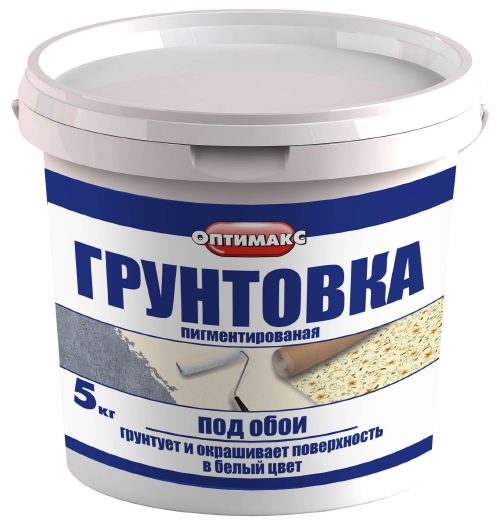
Plastered walls
On the surface of the hardened building mixture Decoration Materials are attached only 60-80 days after application. The surface is pre-treated with a universal primer to improve adhesion. It is recommended to carry out double processing if it is necessary to achieve maximum quality.
Oriented Strand Boards
Before gluing wallpaper on OSB, a sufficiently extensive scope of work must be completed. Firstly, it is necessary to coat the surface with a deep penetration primer, which, along with improving adhesion, will improve the characteristics of the slab. And, secondly, it is necessary to putty the surface.
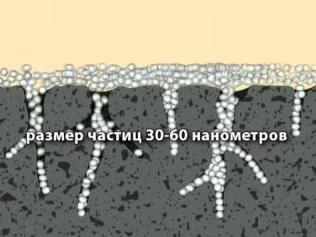
Foamed polystyrene
In some cases, the canvases are fixed directly to thermal insulation material. Therefore, you need to know, for example, how to glue wallpaper onto penoplex - insulation based on foamed polystyrene. When carrying out work, old newspapers are first glued to the surface, and only then fragments of the main covering are attached.
Plasterboard planes
First, the joints between the sheets and the holes from the fasteners are sealed using putty, after which the surface is primed universal mixture. After all defects have been eliminated, the main work can begin. Before gluing wallpaper on GVL, you need to choose the right adhesive composition.
Basic Operations
After preliminary preparation of the side surfaces, wait from 24 to 48 hours (depending on the measures taken). This is necessary for drying primer composition and putty.
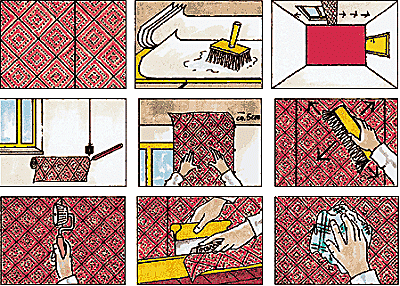
Cooking instructions are usually on the package.
- At the very first stage, markings are made: vertical stripe using a level. A distance is set aside from the window opening that corresponds to the width of the canvas. Applying a flat strip to the surface of the wall, with a simple pencil a line is drawn.
- The material is cut, for which the height of the room is measured. Approximately 5 cm is added to the result obtained to compensate for possible unevenness. The excess part can then be cut off with a regular knife.
- The reverse side of the canvases is thoroughly lubricated with adhesive. Both a brush and a roller can be used for application. After this, the surface of the wall is processed. In the case of non-woven wallpaper, there is no need to process fragments.
- After applying the composition, the canvas is carefully taken by the upper part and applied to the drawn line. Fixation is carried out gradually from top to bottom. A rubber spatula is used to remove air bubbles. The edges are additionally covered with a small roller, the cost of which is low.
- The remaining segments of the coating are fixed according to the same principle. The connection is made directly end-to-end. That is, when combining the canvases, no overlap is made. In the door and window openings Pieces left over from whole fragments can be used.
Attention! Before gluing the fillets to the wallpaper, you must wait until the glue has completely dried. This usually takes about a day. The absence of drafts during this period is the key to obtaining high-quality coverage.
Additional points
- It is advisable to carry out the work together. In this case, one person fixes the canvas in the upper part of the plane, and another person aligns the joints.
- If there are swellings on the surface, then you should separate the fragment from the wall, then press it again, smoothing it with a rubber spatula.
- If there is a pattern on the canvases, adjustments are made, so when cutting, the length should be increased by one step between the patterns.
- When gluing OSB boards, it is recommended to completely putty the surface to improve adhesion.
- The choice of adhesive composition is made taking into account the weight of the material, structure, as well as temperature regime and humidity levels.
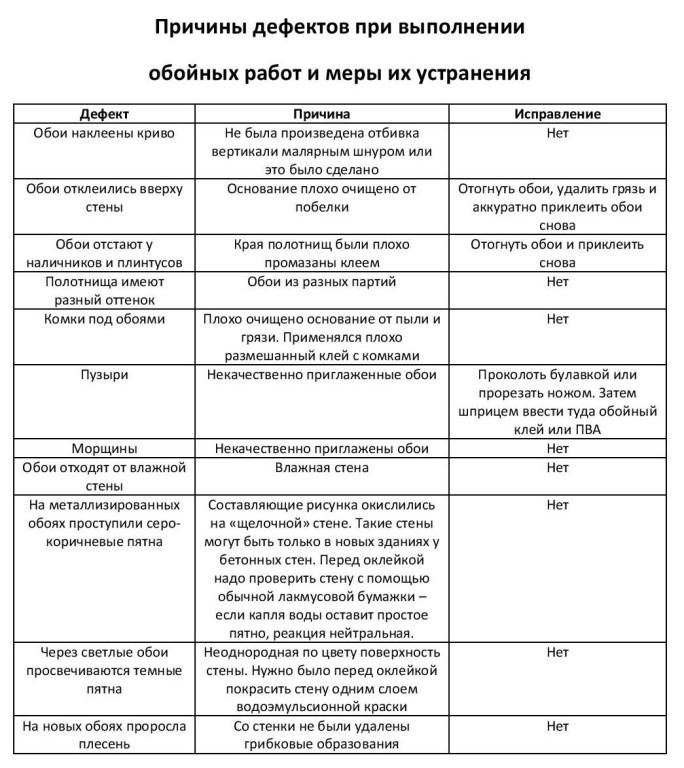
As a conclusion
The above materials give an idea of how to glue wallpaper in the attic, bedroom, living room, kitchen and any other rooms without involving professional painters. Doing the work yourself will significantly reduce finishing costs. The video in this article will help you understand unclear issues and learn some of the intricacies of pasting.
